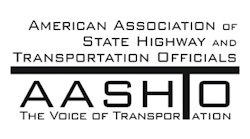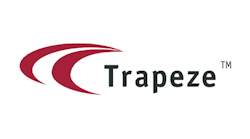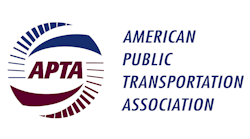Technology surrounding public transportation is rapidly bringing changes to a century-old bus and rail model. 2018 will be landmark year in this multi-billion dollar industry as private companies lead challenges to eroding public monopolies of mobility in urban America.
The advent of autonomous vehicles, using technology to make the transit experience “frictionless” and upgrading security are the leading trends for public transportation heading into 2018 and beyond.
Companies like Google’s Waymo and Intel’s Mobileye are testing self-driving (or autonomous) cars around Phoenix, Arizona, where there are permissive laws.
Public transit agencies and their supplying vendors have been taking notice and developing similar technology for small buses that can run predetermined routes without a driver. The labor cost savings of driverless buses have garnered the attention of public transit managers across the country. One large, multi-national, transportation company, Keolis, kicked off public transit service on open, public roads in November of this year in Las Vegas, Nevada.
Other companies are right behind and planning to offer their own versions in the new year. Mark Joseph, global chief development officer for Transdev says that his company will begin operating their autonomous shuttles on open roads in 2018. In addition to limited public usage, autonomous shuttles will become more prevalent on corporate campuses and airports in 2018.
Liability issues for potential accidents and injuries still need to be worked out. On September 12, 2017 the US National Highway and Transportation Safety Administration (NHTSA) released new federal guidance for automated driving systems entitled, A Vision for Safety 2.0 with a third update due soon. These guidelines indicate that for now the federal government is moving ahead with only voluntary guidance for manufacturers and state governments in this fast evolving technology.
The second major area for innovation in 2018 will be technology improvements to allow for a more seamless, “frictionless” use of public transit in urban areas. A technology driven concept quickly gaining cache in the transit industry world-wide is called Mobility as a Service (MaaS). This approach envisions bundling transportation options in urban areas like cable companies now bundle television, telephone and internet for one monthly subscription fee. In Helsinki, Finland, for example, residents can use a smartphone app called “Whim” to plan and pay for all modes of public and private transportation such as bus, train, taxi, carshare or bikeshare. A passenger can enter their destination, a preferred mode of transit, or combination of modes if needed, and travel. Passengers can pre-pay for the service as part of a monthly subscription or pay as you go using a payment account.
Other local governments are trying the MaaS approach, too. Cities like Paris, Las Vegas, Denver and Los Angeles are piloting various local versions of MaaS that take into account real-time travel conditions, user preferences (e.g. time and convenience vs. cost) and seamless mobile payment.
Nathaniel “Nat” Ford, CEO of Jacksonville Transit Authority and new chair of the American Public Transportation Association states, “Our industry is evolving at a pace, never seen before. Moving away from current models, to one where there’s synergy between different modes of transportation, different technologies and different providers. Technology is being developed every day that is disruptive to our industry. Things such as autonomous vehicles, electric vehicles and artificial intelligence, just to name a few.”
As traditional bus and metro ridership in the United States has declined over the past five years, transit executives are looking to change their business model and embrace these new technologies to compete in the new mobility marketplace. Transit agencies are also adjusting to a new role, more analogous to a main course rather than the whole meal of public transit in their city because new mobility ecosystems are springing and include peer-to-peer car clubs, on demand privately provided bus rides, TNCs, car and bike sharing and more.
Finally, improving transit security is a fast growing need recognized in America. European cities have seen a spike in transit-related terrorist attacks and crime. In the U.S., while airport security has been federalized with the Transportation Security Administration (TSA) taking the lead role, public transit security is still a local responsibility.
So city transit systems are buying up the latest security systems to monitor and respond quickly to cyber and more traditional crime and potential terrorist activity. These include real-time, monitored cameras on buses, trains and in transit stations, with facial recognition and object identification software. Transit police are adopting military-grade armaments and equipment. Gas detection and other terrorist prevention technologies are quietly being implemented in subway stations and big data usage is being deployed to better track transit customers.
Public transportation has offered the same solutions of bus and rail for over half a century to the now almost 50,000,000 daily users of its services across North America. This approach is quickly changing as millennials flock to cities and ditch their cars and technology enables new approaches to unify mobility options. Brand new modes of transportation are being invented and quickly adopted including shared ride services, self-driving cars and buses and magnetic levitation (mag lev) technologies applied in potential high-speed rail and Hyperloop trains. These changes will only accelerate in the coming year.
Paul Comfort is vice president of business development for Trapeze North America. He is the former CEO of the Maryland Transit Administration in Baltimore, a board member of the American Public Transportation Association and the 2016 recipient of the President’s Award for Public Transportation from the American Association of State Highway and Transportation Officials representing all 50 state departments of transportation in the United States. He can be reached at www.paulcomfort.org, on Twitter, and on LinkedIn.





